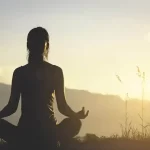
Meditation—An Ancient Practice for Modern Life
14 June 2023
Balancing Body and Mind for Sound Sleep
2 October 2024Internal Breath Work —A Small and Mighty Technique for Mental Health

Mental health disorders like depression and anxiety are very common. The 2020 General Social Survey conducted by the Australian Bureau of Statistics estimated that more than half of Australians (59%) experienced at least one personal stressor in the last 12 months.
Conscious breathing to reduce stress
In the same survey, one third of Australians (33%) reported ‘Always’ or ‘Often’ feeling rushed for time. The exhausting fast pace of modern life promotes overstimulation and overscheduling. At the individual level, main causes of anxiety or depression include:
- Stress
- Isolation
- Suppression of emotions
- Lack of knowledge on how to breathe
Absolutely, HOW to breathe does matter!
Our nervous system keeps functions like our heart rate, digestion, mood, and breathing running on autopilot. However, of all the functions governed by our nervous system, there is only one that we can manually override: the breath.
That means, there are two types of breathing we do:
- Automatic breathing
This is the one we do all the time.
- Conscious breathing
Its purpose is to change our internal state.
Connection between our breathing, emotions, and nervous systems
Our mood connects directly to our daily challenges. When we sense pain or danger, we get into a ‘fight-or-flight’ state. However, aside from getting frightened or running away, we may find a way to deal with it easily or, at least, make the situation less painful.
Much research has been done by neuroscientists and psychologists to find out the connection between our breathing, emotions, and nervous systems. The chart below explains how our stress level and type of mood vary under the functions of our nervous system.
| Autonomic Nervous System | ||
| Sympathetic Nervous System | Parasympathetic Nervous System | |
| Function | Prepares the body for stress-related activities. | Helps the body relax back into routine tasks. |
| Mode | Body in a ‘fight-or-flight’ state | Body in a ‘rest-and-digest’ state |
| When dominant |
|
|
The chart reveals that it is possible to direct our mood to overcome challenges like depression and anxiety, if we can make our parasympathetic nervous system dominant and steering ourselves into a relaxed but alert state. The key is switching our breath from automatic breathing to conscious breathing.
Internal breath work: Focus—Calm—Stress-reduction
Conscious breathing generally describes the act of developing an awareness of your breath as it moves in and out of your body. This practice gives rise to focused attention, which, in turn, calms the nervous system, triggering the fight-or flight mode to switch off, and the rest-and-digest mode to switch on, resulting a more positive mood and a greater capacity to regulate our stress response. It can help us achieve a state of calm and presence so we can engage more deeply with life. It might also help us navigate difficult thoughts, emotions, and experiences, creating the space to respond with intention and objectivity.
A study[i] finds that pausing to take deep, calm breaths while experiencing stress seemed to have an immediate calming effect on the mind and body. These calming breaths may lead to a more mindful outlook about the stressor itself and how you might handle it.
A 2019 review[ii] noted that yogic breathing exercises had a positive effect on:
- brain activity
- nervous system and lung function
- metabolism
- body chemistry
In another article on the Always Healthy and Happy website, we assure that meditation is an ancient practice adapted for the stressful modern life. Conscious breathing, which uses breathing as an anchor for concentration and awareness, is a great way to prepare for meditation. The relaxation it induces also makes it easier to slip into a meditative state.
[i] Tellhed, U., Daukantaitė, D., Maddux, R.E. et al. Yogic breathing and mindfulness as stress coping mediate positive health outcomes of yoga. Mindfulness 10, 2703–2715 (2019). https://doi.org/10.1007/s12671-019-01225-4
[ii] Saoji, A. A., Raghavendra, B. R., Manjunath, N. K. (2019). Effects of yogic breath regulation: A narrative review of scientific evidence. Journal of Ayurveda and Integrative Medicine, 10(1):50-58. https://doi.org/10.1016/j.jaim.2017.07.008

